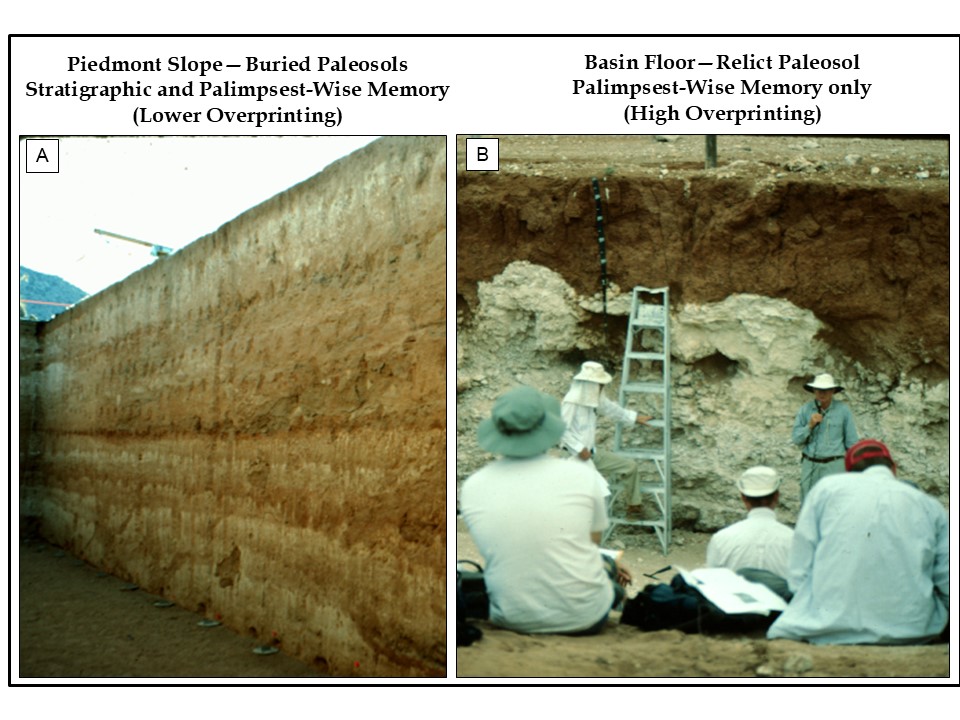by Curtis Monger
Professor Emeritus, New Mexico State University
The Jornada Basin LTER study area has some of the oldest and youngest soils in North America. What does it mean that a soil is old or young? It refers to the time when erosion and sedimentation ceased, the landscape stabilized, and soil horizons formed. The basin floor at the Jornada Experimental Range west of Headquarters, for example, stabilized and soil formation began about 1.6 million years ago based on the argon-argon date of pumice in that soil. The ancient age of that soil is also reflected by its strongly developed petrocalcic horizon. On the younger spectrum, soils on alluvial fans linked to active arroyos are only a few decades old and do not have strongly developed soil horizons, only sedimentary layers.
Why is knowing how old a soil is important for ecology? Because soils have a “memory.” They remember periods of erosion which are associated with the bare ground characteristic of shrublands. Additionally, they contain an isotopic memory of vegetation in the past. The carbon isotopes (13C/12C) that occur in a soil that had formed in a shrubland is different than the carbon isotopic signature of a soil that had formed in a grassland. Based on soil memory at the Jornada, we can infer a period of increased erosion and shrubland vegetation (i.e., aridity) during the Medieval Warm Period about 1000 years ago. We also see evidence of a major period of aridity in the middle Holocene about 5000 years ago. Both of these arid periods, like now, are in the current interglacial. Previous interglacial periods, each separated by about 100,000 years, were also times of aridity. In contrast, the intervening glacial periods were times of increased grass cover, landscape stability, and soil formation. The value of such long-term records is that they provide context for our current studies of ecosystems in the Chihuahuan Desert.

Note: This is a summary of a published work. If you would like to read the full publication, please visit https://jornada.nmsu.edu/publications.